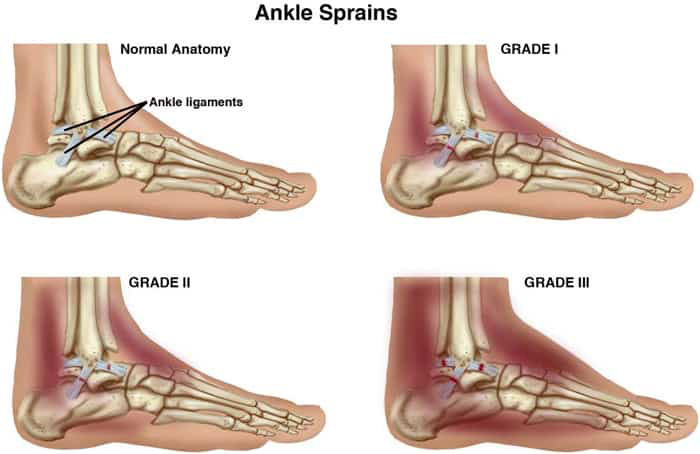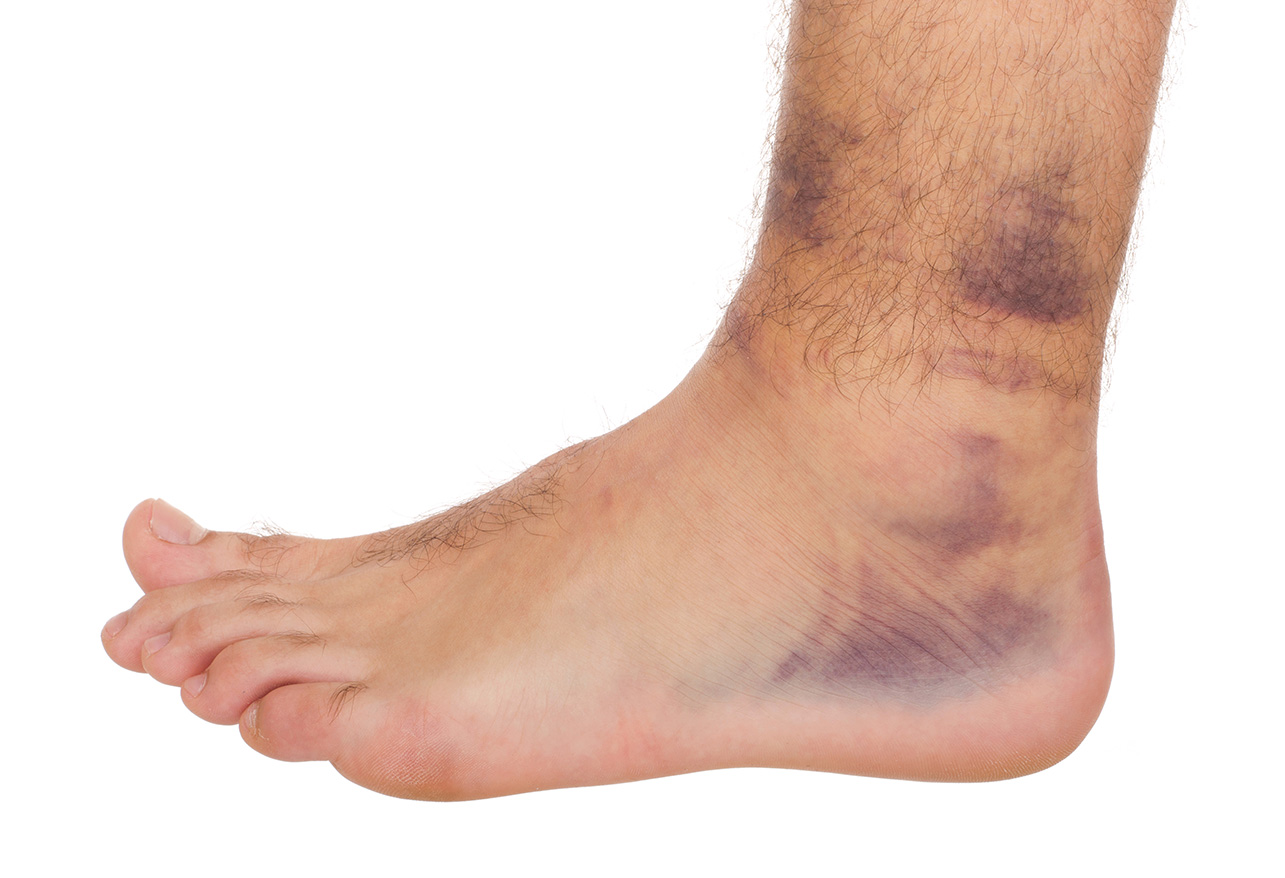Ankle Sprain
What is an Ankle Sprain?
An ankle sprain is a common injury that occurs when increased stress is placed on the medial (Inside) or lateral (Outside) parts of the ankle causing an overstretch or tear of the ligaments in those areas. A sprain at the ankle can be experienced after sustaining a fall, twisting, or rolling over the ankle while walking or running over uneven surfaces, or playing sports that require running, sudden stops, and quick direction changes.
The ankle, also known as the talocrural joint, is comprised of the tibia and fibula (Bones in the lower leg), and the talus (Bone in the foot). The medial aspect of the ankle contains the deltoid ligament which is a strong, flat, and triangular-shaped group of ligaments. The lateral aspect of the ankle is made up of the anterior (front) and posterior (back) talofibular ligaments and the calcaneofibular ligaments. These ligaments are strong, fibrous, and flexible connective tissues that connect one bone to one another and are responsible for maintaining the placement and stability of the ankle.
Due to the increased strength and stability of the deltoid ligament, a sprain is less likely to occur on the medial aspect. However, the lateral ligaments are not as strong and there is more instability at the outside of the ankle. This results in a higher likelihood of the foot moving into an inverted (Inward movement of the ankle/foot) position placing increased stress on those ligaments

An ankle sprain can be experienced by anyone; however, younger male athletes in their teens to mid-twenties, female athletes over the age of thirty, and deconditioned and overweight individuals are at a higher risk. Other risk factors include wearing inappropriate footwear, improper warm-up, exercising while fatigued, and having a history of an ankle sprain.
How is it diagnosed: In order to determine what type of injury was sustained a physical examination is performed by either a doctor or physical therapist. During this examination, they gather a history of what caused the injury, assess for bruising, tenderness, or swelling over the medial/lateral aspect of the ankle, flexibility/range of motion of the ankle, strength, and pain with contraction of the ankle musculature.
In addition to the physical examination, a doctor may order an MRI to determine the size, location, and extent of the injury, an ultrasound to observe the stability of the ligaments, or a radiograph (x-ray) if a fracture is suspected.
A sprain can be categorized as one of three grades. Grade 1 (Mild) occurs when the muscle is overstretched with microscopic tearing. Grade 2 (Moderate) is a partial tear with mild to moderate instability while a grade 3 (Severe) is the most severe with a full tear and significant instability at the ankle.
Symptoms of an Ankle Sprain
The individual may feel a sudden sharp pain in the medial/lateral aspect of the ankle or popping sensation during the activity that caused the injury. This is typically followed by swelling and/or bruising (Black or blue-ish in color) along the affected side of the ankle. The individual may also report increased stiffness and weakness when using the affected leg or increased difficulty bearing weight through that foot/ankle causing a limp when attempting to walk. They may also feel increased pain in the ankle that worsens when engaging in active range of motion. Depending on the severity, instability may be experienced as well.
How can a Physical Therapist Help with an Ankle Sprain?

A physical therapist can assist with the treatment of the symptoms and act as a preventable measure for experiencing an ankle sprain with an overall goal of restoring the function of the joint, improving stability, and limiting the formation of scarring. Education can be provided on how to manage current symptoms using the RICE method (Rest, Ice, Compression, and Elevation). This typically includes avoiding activities that result in the increase in pain and using crutches or an assistive device depending on the severity. Applying ice for periods of 20 minutes multiple times a day, using compression such as an ACE bandage, and elevating the affected leg above the level of the heart can assist with controlling pain and swelling. Use of an ACE bandage can also provide increased stability which can be especially helpful in those with grade 3 sprains requiring casting or bracing. Casting or bracing is typically performed for 2-3 weeks.
Each specific treatment plan will be determined by the physical therapist based on the individual’s overall health, activity level, symptoms, and severity. As pain becomes more tolerable, activities to promote a range of motion are implemented. This is followed by progressive strengthening of the muscles in the lower leg, ankle, and foot which can be performed on land or in an aquatic setting if the difficulty remains with bearing weight through the affected limb.
Additional treatments implemented by physical therapists include ultrasound (Deep heat via sounds waves), massage or soft tissue mobilization, electrical stimulation, kinesiology taping (K-taping), gait training, balance training (Decreased balance can lead to falls, re-injury, and instability), and agility training including hopping and jumping for return to sport.
Prognosis: Recovering from an ankle sprain is good but the time in which it takes to recover can vary depending on the severity of the sprain. Recovery time for a grade 1 sprain is 1-3 weeks, grade 2 is 3-6 weeks, and grade 3 can take a few months. As mentioned before, most can recover without the need for surgery and respond well to guidelines and education provided by a physical therapist.






